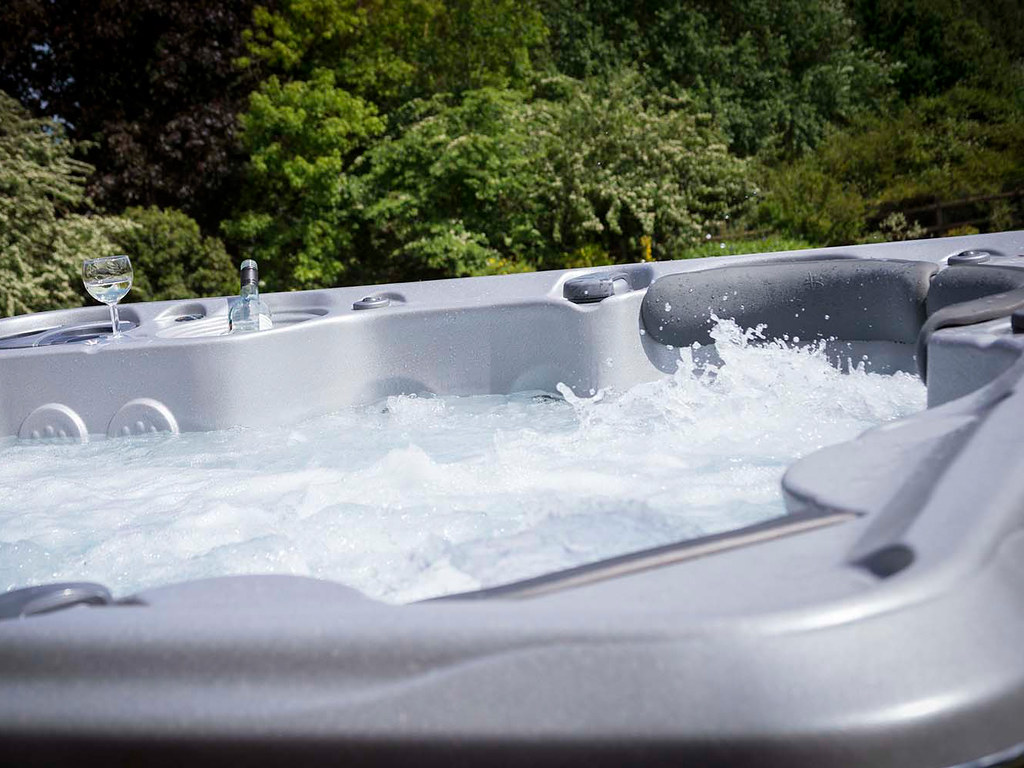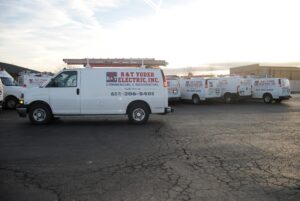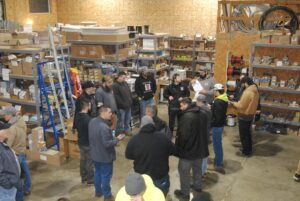
Picture this: a serene evening with warm, bubbling water, ambient lighting, and the gentle hum of relaxation. Your hot tub offers the perfect escape from life’s chaos. But beneath the surface of this tranquil experience lies a sophisticated electrical system that demands precision and safety.
Hot tub electrical installation isn’t as simple as plugging in a toaster. It requires meticulous planning, adherence to safety standards, and professional execution. From choosing the correct wiring to navigating local codes, every step is crucial. A single oversight can lead to malfunctions, shock hazards, or even electrical fires. This guide walks you through the essentials of hot tub electrical installation, ensuring that your oasis remains a source of relaxation—not risk.
Understanding the Electrical Requirements for Hot Tubs
Hot tubs require more power than most household appliances. Unlike lamps or televisions, these water-filled relaxation machines demand substantial electrical current to run heaters, jets, and lighting systems simultaneously.
Key Electrical Requirements:
- Voltage:
- 120V (Plug-and-Play Models): Smaller tubs that connect to standard outlets. Convenient but less powerful.
- 240V (Hardwired Models): Larger hot tubs with advanced features like hydrotherapy jets and high-capacity heaters.
- Amperage:
- Most hot tubs require 30-60 amps, depending on size and features.
- Higher amperage allows for more powerful heating and jet operation.
- Dedicated Circuit:
- Hot tubs must have a dedicated circuit to prevent power surges and system overloads.
- Ground-Fault Circuit Interrupter (GFCI):
- A GFCI breaker protects against electrical shock by shutting off power when it detects current leakage.
Pro Tip: Always consult your hot tub’s manual for model-specific electrical requirements.
The Installation Process: Step-by-Step Breakdown
Installing a hot tub requires more than running a cable from your electrical panel to the spa. Here’s a step-by-step breakdown to ensure safety and functionality:
1. Planning and Permits
- Check local building codes and obtain necessary permits.
- Identify an installation location that provides stable, level support and proper drainage.
- Ensure the hot tub is positioned at least five feet from electrical outlets or panels, per the National Electrical Code (NEC).
2. Site Preparation
- Prepare a concrete pad, pavers, or reinforced deck to support the tub’s weight.
- Install proper drainage systems to prevent water accumulation near electrical components.
3. Electrical Panel Preparation
- Upgrade or install a sub-panel if your main panel lacks capacity.
- Run a dedicated, properly gauged cable to the spa disconnect panel.
Pro Insight: Use THHN/THWN-2 wire rated for outdoor, underground use.
4. Installing the GFCI Breaker and Disconnect Panel
- Mount the GFCI breaker within sight of the hot tub but no closer than five feet.
- Connect the breaker to the main electrical panel using appropriately sized conduit and cable.
5. Wiring the Hot Tub
- Connect wiring to the tub’s control panel following manufacturer guidelines.
- Secure all connections and test for continuity and insulation integrity.
6. Final Testing and Inspection
- Power up the system and test all functions (jets, heaters, lights).
- Schedule a professional inspection to ensure compliance with electrical codes.
Safety First: Essential Precautions for Hot Tub Electrical Installation
Electricity and water are a dangerous duo. Ensuring safety during and after installation protects users from shocks, burns, and potential fires.
Key Safety Practices:
- Install GFCI Protection: Required by law and essential for preventing electrical shocks.
- Use Outdoor-Rated Components: Cables, conduits, and outlets must be rated for outdoor exposure.
- Maintain Clearance Distances: Keep electrical components at least five feet away from the hot tub.
- Avoid Extension Cords: Hot tubs should be directly wired into the electrical panel.
- Schedule Regular Inspections: Periodic checks ensure ongoing compliance and safety.
Did You Know? According to the Electrical Safety Foundation International (ESFI), water-related electrical incidents often stem from improper grounding or the absence of GFCI protection.
Indoor vs. Outdoor Hot Tub Installations: Electrical Considerations
The installation process differs significantly based on location. Here’s what you need to consider:
Outdoor Installations
- Weatherproof Equipment: All electrical components must withstand rain, snow, and UV exposure.
- Conduit Installation: Use PVC or metal conduit to protect wires from environmental damage.
- Grounding Systems: Install proper grounding rods to protect against lightning strikes.
Indoor Installations
- Ventilation: Hot tubs produce substantial humidity, necessitating robust ventilation systems.
- Drainage: Install waterproof flooring and efficient drainage to prevent water damage.
- Moisture-Resistant Wiring: Use GFCI-protected outlets and moisture-sealed connections.
Pro Tip: Indoor installations often require additional HVAC modifications to manage humidity levels effectively.
Common Mistakes in Hot Tub Electrical Installation
Even seemingly minor errors during installation can have major repercussions. Here are some common pitfalls:
- Skipping Permits and Inspections:
Avoiding permits might seem like a time-saver, but it can lead to code violations, fines, and safety risks. - Incorrect Wire Gauge:
Using undersized wires causes overheating and potential fire hazards. Always follow manufacturer specifications. - Poor Grounding:
Grounding ensures excess electricity safely dissipates into the earth. Improper grounding leaves the system vulnerable to shocks. - Improper GFCI Installation:
Without a correctly installed GFCI breaker, users face a heightened risk of electric shock. - Inadequate Distance from Water Sources:
Positioning electrical outlets or components too close to water sources violates safety standards and increases risk.
The Role of Professional Electricians in Hot Tub Installation
While some DIY enthusiasts might be tempted to handle hot tub wiring themselves, professional electricians bring essential expertise to the table.
What Professionals Offer:
- Code Compliance: They stay updated with NEC regulations.
- Accurate Load Calculations: Ensuring the system supports the hot tub’s power demands.
- Safe Installation Practices: Reducing the risk of future malfunctions or hazards.
- Warranty Protection: Many manufacturers void warranties for DIY installations.
Fun Fact: In most states, hot tub installations must pass an electrical inspection before the tub can be legally used.
Hot Tub Electrical Components Explained
Understanding the components involved in hot tub wiring helps homeowners make informed decisions during the installation process.
1. Service Panel
The main electrical panel provides power to the hot tub via a dedicated circuit.
2. GFCI Breaker
This device shuts off power when it detects electrical leakage, preventing shocks.
3. Disconnect Panel
Located near the hot tub, this panel allows technicians to safely cut power during maintenance.
4. Control Panel
The tub’s internal control panel regulates pumps, heaters, lights, and filtration systems.
5. Wiring and Conduits
Outdoor-rated cables run through protective conduits to safeguard against moisture, pests, and physical damage.
Energy Efficiency Considerations for Hot Tub Electrical Systems
Hot tubs can consume significant electricity, especially if run frequently. Implementing energy-efficient practices can mitigate costs and environmental impact.
Tips for Energy Efficiency:
- Use Smart Controls: Automate heating schedules to avoid unnecessary power use.
- Choose Energy-Efficient Pumps and Heaters: Modern variable-speed pumps use less energy without sacrificing performance.
- Install Insulated Covers: Prevent heat loss when the tub isn’t in use.
- Consider Solar Integration: Solar-powered heating systems can dramatically reduce operational costs.
Did You Know? Switching from traditional incandescent lighting to LED bulbs in your hot tub can reduce lighting-related energy consumption by up to 85%.
FAQ Section
1. How long does hot tub electrical installation take?
Installation typically takes 4-6 hours, but complex setups may extend the timeline.
2. Do all hot tubs require a GFCI breaker?
Yes. The NEC mandates GFCI protection for all hot tubs to prevent electric shock.
3. Can I plug my hot tub into a regular outlet?
Only 120V plug-and-play models can use standard outlets. Larger models require dedicated 240V circuits.
4. How can I reduce energy costs for my hot tub?
Use insulated covers, smart thermostats, and energy-efficient pumps. Regular maintenance also enhances efficiency.
5. Is professional installation mandatory?
While DIY is possible, professional installation ensures compliance with safety codes and protects warranties.
Hot tubs promise relaxation, but their electrical systems demand attention and precision. A professionally installed hot tub ensures not only optimal performance but also the safety of everyone who steps into that bubbling oasis.
Don’t let faulty wiring or code violations disrupt your tranquility. Contact us today for expert hot tub electrical installation services. We’ll handle the technical details so you can sit back, relax, and enjoy the soothing embrace of your spa—worry-free.







